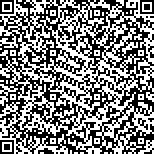本文已被:浏览 8714次 下载 6645次
中文摘要: 中国极轨气象卫星遥感技术的研究始于20世纪70年代。为获取昼夜云图,1974年开始研制48转/分可见红外扫瞄辐射计,可见和红外图像地面分辨率分别为4和5.8毫弧度。1977年“FY-1”气象卫星进入工程研制,开始使用辐射致冷器冷却的HgCdTe红外探测器研制120转/分扫瞄辐射计,图像地面分辨率均提高到3.6毫弧度。随着HgCdTe探测器性能的提高和数字化技术的进步,1982年开始研制360转/分5通道扫瞄辐射计,其中2个可见光通道用于海洋水色观测,图像地面分辨率1.2毫弧度。1988年9月“FY-1A”卫星首次发射,在1990年9月发射的“FY-1B”卫星上,扫描辐射计稳定工作了2年,图像清晰,红外辐射定标精度优于1K。为同时满足气象和海洋水色观测的需要,1989年提出研制十通道扫瞄辐射计,它不仅设有NOAA卫星AVHRR/3的6个探测通道,还有4个通道分别用于海洋水色观测和大气校正。该仪器装载在1999年5月和2002年5月入轨的“FY-1C”和“FY-1D”卫星上,运行寿命分别超过4年和9年。为发展新的遥感仪器和提高观测能力,在2002年发射的“SZ-3”和“SZ-4”飞船上进行了中分辨率成像光谱仪、多模态微波遥感器、太阳紫外光谱探测仪、地球辐射收支仪的遥感试验,并开展了大气红外分光计的研制,为中国极轨气象卫星从二维图像向三维立体观测建立了技术基础。第二代业务气象卫星“FY-3A”和“FY-3B”分别于2008年5月和2010年11月发射,各装载了10台遥感仪器,获取的数据用于天气预报和气候变化研究。中分辨率成像光谱仪有20个探测通道,可对全球表面状况做较精细的快速重复观测。
中文关键词: 气象卫星,星载遥感器,遥感技术
Abstract:China began to study the polar orbit meteorological satellite remote sensing technology in the 1970s. To acquire the global cloud images day and night, a visible and infrared scanning radiometer is developed in 1974. The radiometer used a scanner with 48 rpm, an Si detector, and an infrared thermistor detector. At the orbit altitude of 900 km, it could generate images with ground resolutions of 3.6 km and 5.2 km respectively. In 1977, the FY-1 meteorological satellite came into its engineering development phase, a cooled HgCdTe infrared detector is used for its scanning radiometer with 120 rpm. Its ground resolution had been improved to 3.2 km. With the improvement of the performance of HgCdTe detectors and the progress of digital technologies, China began to develop a 5-channel scanning radiometer with 360 rpm which had the same performance as that of the Advanced Very High Resolution Radiometer (AVHRR) onboard of TIROS-N satellite in 1981. Among the five channels, two channels were used for ocean color observation and had the ground resolution of 1.1 km. In September 1988, the FY-1A satellite was launched for the first time. Later, the scanning radiometer onboard of the FY-1B satellite was launched in September 1990 and was in stable operation for two years after. The visible and infrared images acquired were very clear and their infrared radiant calibration accuracy was better than 1 K. To meet the needs of meteorological and ocean color observations at the same time, China began to develop a Ten-channel Scanning Radiometer. The instrument not only has six channels similar to those channels of the AVHRR/3 onboard the NOAA satellite, but also has four channels used for ocean color observation and atmospheric correction, respectively. The instrument was installed onboard of the FY-1C and FY-1D meteorological satellites launched in May 1999 and in May 2002, respectively. They were in stable operation and acquired clear images for more than 4 years and more than 9 years, respectively. To develop new remote sensors and improve the observation ability of polar orbit meteorological satellites, China carried out a series of remote sensing tests for a medium resolution imaging spectrometer, a multi-mode microwave remote sensor, a solar ultraviolet spectrum detecting instrument, and an earth radiation budget measurement instrument onboard of the SZ-3 and SZ-4 spacecrafts launched in 2002. It also developed an infrared atmospheric sounder which had laid the technical basis for its polar orbit meteorological satellites to transform from two-dimensional imaging observation to three-dimensional stereo observation. The second generation of operational meteorological satellite FY-3A was launched in May 2008. It carried ten remote sensing instruments in total, including a Ten-channel Scanning Radiometer, a Medium Resolution Imaging Spectrometer, an Infrared Radiation Sounder, a Microwave Temperature Sounder, a Microwave Humidity Sounder, a Microwave Imager, a Total Ozone Unit, a Solar Backscatter Ultraviolet Spectrometer, a Solar Irradiance Monitor, and an Earth Radiation Monitor. The data acquired were used both for weather forecast and for climate change study. The medium resolution imaging spectrometer had 20 detecting channels. Among them, four visible channels and one thermal infrared channel had a ground resolution of 250 m which could be used for fast, repeatable, and finer observation of global surface.
文章编号: 中图分类号: 文献标志码:
基金项目:
| Author Name | Affiliation |
| Gong Huixing | Shanghai Institute of Technical Physics, Chinese Academy of Sciences, Shanghai 200083, China |
引用文本:
龚惠兴.中国极轨气象卫星遥感技术的发展[J].中国科学院院刊,2013,(z1):40-49.
Gong Huixing.Development of Polar Orbit Meteorological Satellite Remote Sensing of China[J].Bulletin of Chinese Academy of Sciences,2013,(z1):40-49.
龚惠兴.中国极轨气象卫星遥感技术的发展[J].中国科学院院刊,2013,(z1):40-49.
Gong Huixing.Development of Polar Orbit Meteorological Satellite Remote Sensing of China[J].Bulletin of Chinese Academy of Sciences,2013,(z1):40-49.


